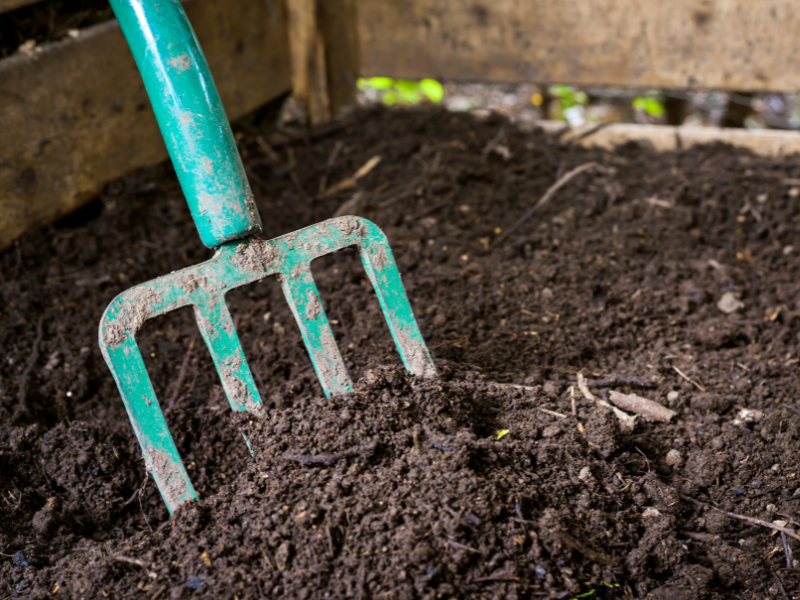From the Rotline: Aerobic Composting and Anaerobic Digestion – What’s the Difference?

This was an inquiry to our community Rotline, a hotline where community members may ask composting and waste questions and receive step-by-step answers from one of our expert staff members.
Rotline Question:
What is the temperature range for a compost pile that has gone anaerobic?
Answer:
Anaerobic digestion can occur at two temperature ranges: between 86 and 95 and 122 to 140 degrees Fahrenheit.1
What’s the difference between aerobic and anaerobic decomposition?
Anaerobic decomposition, or fermentation, is the reduction of organic matter into humus by putrefaction. It breaks carbohydrates down into acetic acids2, whereas aerobic decomposition breaks them down into the simpler building blocks of carbon dioxide, water, humus, and ammonia, producing a greater amount of energy in the form of heat.3 During both, microbes break down organic matter, but the microbes are different kinds of organisms in each.
To sum it up, anaerobic decomposition usually, but not always, results in a cooler pile than aerobic decomposition.
What are the pros and cons of aerobic composting and anaerobic digestion?
Aerobic composting is generally preferred for home composting, because it is faster, kills harmful pathogens, and does not produce methane, a potent greenhouse gas. Anaerobic digestion is more often used in commercial facilities, where methane can be converted into biofuel and strong smells can be contained more easily.
That said, there are benefits and disadvantages to both for at-home composting.4
Advantages of Aerobic Composting:
- Faster: One pile can be ready in six weeks
- Safer: Kills pathogens and weeds
- More environmentally friendly: Sequesters carbon dioxide
- More pleasant: Doesn’t smell
- A little more nutrient-rich: Retains slightly more nitrogen
Drawbacks of Aerobic Composting:
- Labor intensive: Must be turned weekly
- Limited by size: Can only process larger piles
Advantages of Anaerobic Digestion:
- Easy: Doesn’t need to be turned
- Not limited by size: Can process small amounts of material
Drawbacks of Anaerobic Digestion:
- Slow: One pile can take six months to complete
- More risky: Some pathogens and weeds can survive the process
- Less environmentally friendly: Produces methane
- Less pleasant: Smells more due to the release of gases
- Slightly less nutrient-rich: Retains slightly less nitrogen
